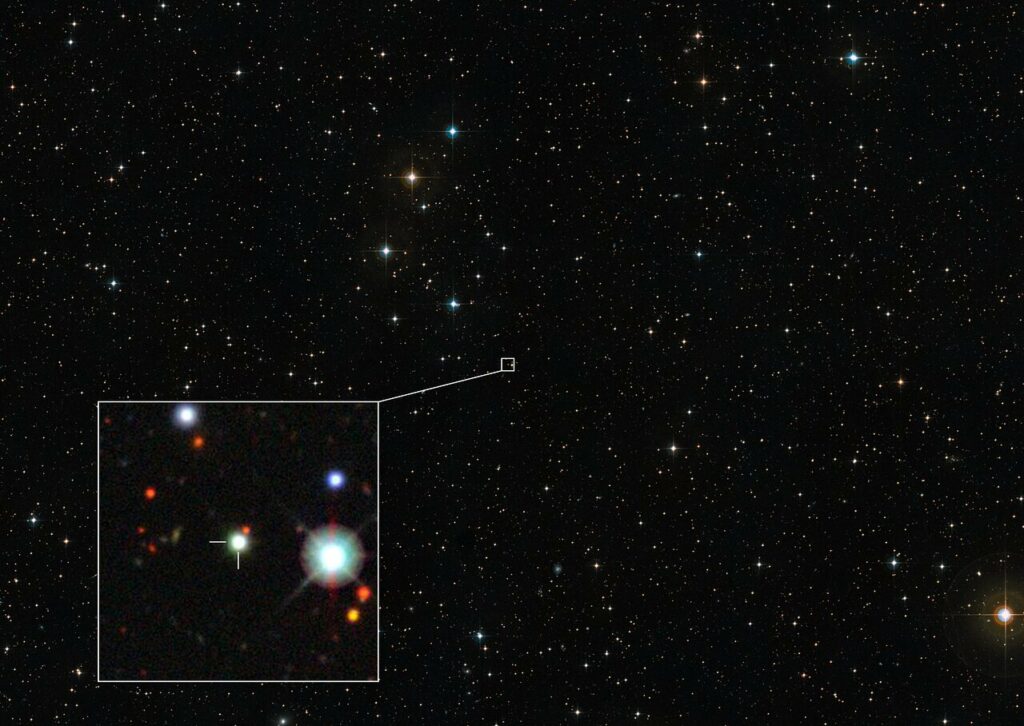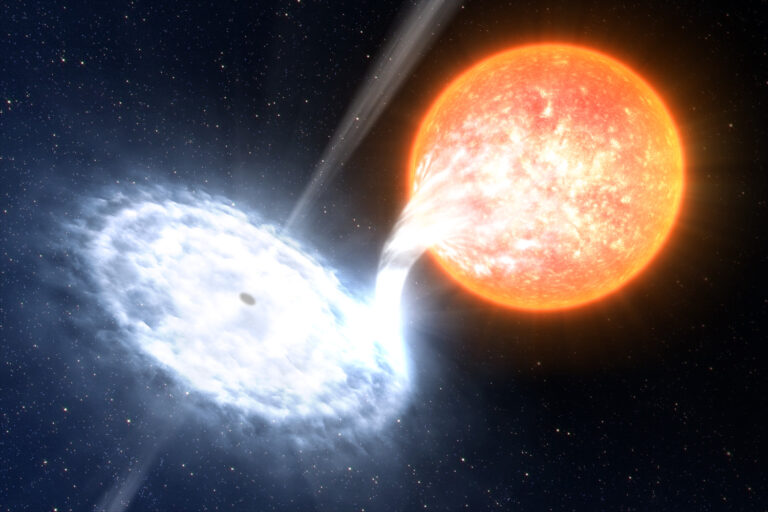Black Hole with 17 Billion Solar Mass Devours One Sun Daily
When astronomers used the VLT of ESO for the study of a unique quasar they were able to find out that it belongs to a specific category while being the brightest of its kind as well as the most luminous object in the universe. Quasars are those active galactic nuclei that are residing in distant galaxies and are maintained by the tremendous black holes. This quasar is residing in the extraordinary black hole which is currently becoming twice more massive for one solar mass every day, which makes this black hole the fastest-growing black hole in the universe so far.
Quasars are formed as a result of the matter collected by black holes present around them, which in turn produce a large luminosity. Therefore, quasars are some of the brightest objects within our observable Universe, even when their distance is measured in billions of light years.
Usually, the brightest quasars evidence the growth of the top-rate massive black holes. ”We have found that black hole which grows the fastest as far as we know: its mass is 17 billion times that of a sun and it consumes slightly more than a mass of the sun every day; this makes it a record holder – the brightest object in the observable universe,” said Christian Wolf, a Senior Research Fellow of the Australian National University (ANU) and the author of the materials and the leader of the study published in the scientificThe zo, in particular, is a quasar called J0529-4351, and this whopping is associated with an object that is approximately 12 billion light-years away from us.
There is a specific black hole of matter, which draws material towards it and forms this disk, which in turn radiates a vast quantity of energy. This energy produces the luminosity that is over 500 trillion times brighter than stars of the sun for J0529-4351.
Another co-author, Ph. D. student at the Australian National University Samuel Lai said that an accretion disk around such object is typically a hot disk and extends to about seven light-years, and therefore this one could be the largest known. In perspective, seven light-years is equivalent to about 15,000 times the distance between the Sun and Neptune . However, this brilliant quasar seemed not to attract the attention of astronomers for a longtime. Christopher Onken, an astronomer at ANU, who co-authored the paper was also shocked that it had managed to be unseen considering there existed a million less exotic quasars known. He noted that the object was clearly visible in the images of the observatory’s Schmidt Section Southern Sky Atlas taken since 1980 but it was classified as a quasar only some decades later.
Quasars are difficult to discover because the observations have to be highly accurate over a large area of the night sky. The outcome is two vast datasets that contain thousands of quasars, but they are so heterogeneous that researchers have to use machine learning algorithms to identify them.
But again these models work with a data which has already been captured so these models mainly assign probabilities on objects which have been recognized earlier. If the incoming signal indicates that a newly discovered quasar is brighter than any previous quasars, the program will disregard it and label it as a star, which is relatively nearby in this context.
First, it is important to note that the European Space Agency’s Gaia satellite mistakenly classified J0529-4351 as a star and not a quasar because of its luminosity. Comparatively though, last year, its true identity was established as a distant quasar on the basis of observations made from the ANU 2.
Three-meter telescope situated at Siding Spring Observatory in Australia. As a result, a larger telescope and more precise instruments were needed to continue the investigation on this outstanding quasar. For this purpose, spectroscopic data from the X-shooter spectrograph installed on ESO’s VLT in the neighbouring Atacama Desert in Chile were used. Furthermore, the virtually fastest-growing black hole will be ideal for GRAVITY+ on ESO’s VLT Interferometer (VLTI). This innovation is particularly meant to help in determining the mass of black holes and even those that are based far away from our planet.
In addition, the Extremely Large Telescope, under construction for the European Southern Observatory in the Atacama desert of Chile with a size of 39 meters, will significantly improve the discovery and examination of such targets.

Observing and researching other more distant giants has the ability of explaining the history of the universe and how the black holes were formed and how they interacted with their host galaxies. However, there is more to Wolf than just a desire to satiate her scientific curiosity. “Personally, it is a source of great satisfaction for me,” he said. “For a couple of minutes every day, I get to feel the adrenaline of a treasure hunt, and use all the things I’ve learned. ”
Do not forget to share your opinion with us to provide you with the best posts !




0 Comments